Active Recall vs Spaced Repetition: What’s The Real Difference?
Active Recall vs. Spaced Repetition: What’s The Real Difference?
Ever felt that frustration? You study for six hours straight, burn the midnight oil for your JAMB exam, and then… blank. You get into the exam hall, and it feels like your brain has leaked.
I’ve been there. The truth is, most of us were taught how to study all wrong. We re-read, we highlight, and we cram.
The secret isn’t studying harder. It’s studying smarter. This is where two powerhouse techniques come in: Active Recall and Spaced Repetition.
But what is the difference between spaced repetition and active recall?
Here’s the simple answer: Active Recall is what you do (testing yourself), while Spaced Repetition is when you do it (at the perfect time before you forget).
They aren’t competitors. They are partners. And in this post, I’ll show you exactly how to use them together to finally make information stick.

What is Active Recall? (The “Test-Yourself” Method)
Active Recall (also called “retrieval practice”) is the simple act of retrieving information from your brain, rather than passively putting it in.
- Passive studying (what most of us do): Re-reading your textbook, watching a lecture video, or looking over your highlighted notes. It feels productive, but it’s very low-effort for your brain.
- Active Recall (what works): Closing the book and asking, “What were the five causes of the Aba Women’s Riot?” or “How do I solve this physics problem without looking at the example?”
Every time you force your brain to pull out a piece of information, you strengthen that memory. It’s like building a muscle. Re-reading is like watching someone else lift weights. Active recall is you doing the heavy lifting.
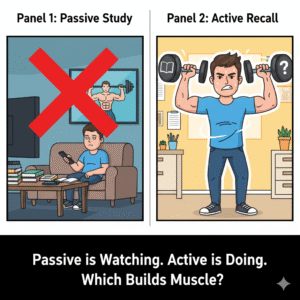
What is Spaced Repetition? (The “Don’t-Forget” Timetable)
Spaced Repetition is a learning schedule. It’s designed to fight your brain’s natural “forgetting curve.”
In the 1880s, a psychologist named Hermann Ebbinghaus discovered something depressing: we forget things very quickly. After learning something new, our memory for it drops like a stone, especially in the first 24 hours.
Spaced Repetition fixes this. The idea is to review a piece of information at the exact moment you’re about to forget it.
- You learn a new formula.
- You review it 1 day later (just as you start to forget).
- You review it again 3 days later.
- Then 1 week later.
- Then 3 weeks later.
Each time you review it, the memory gets stronger, and the “space” until the next review gets longer. You’re basically resetting the forgetting curve, as explained by learning experts at Birmingham City University, and locking that info into your long-term memory.
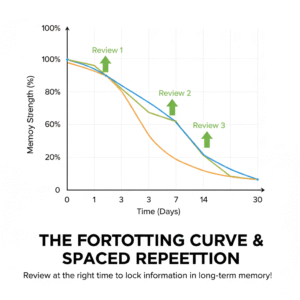
The Real Difference Between Spaced Repetition and Active Recall
This is the part most students miss. You don’t choose one or the other.
You use Active Recall during your Spaced Repetition sessions.
- Bad Study Plan: “My timetable says it’s time to study ‘Photosynthesis.’ I’ll just re-read the chapter for 30 minutes.” (This is Spaced Repetition… but with a passive method. It’s weak.)
- Great Study Plan: “My timetable says it’s time to study ‘Photosynthesis.’ I’ll pull out my flashcards and test myself for 10 minutes.” (This is Spaced Repetition + Active Recall. It’s powerful.)
Think of it this way: Active Recall is the exercise, and Spaced Repetition is the training schedule. You need both to get in shape for your exams.
How I Use Them Together for Exams (A Simple Plan)
This is my practical, no-fluff method.
- Make Your “Materials” (The “Active” Part): After you learn something new in class, don’t just write notes. Create “testable” materials. The most popular are flashcards. (You can use an app like Anki or just cut up paper).
- Front: A question. (e.g., “What is Osmosis?”)
- Back: The answer. (e.g., “Movement of water from… etc.”)
- Do Your First Review (The “Recall” Part): That same day, go through your new flashcards. Try to answer every single one from memory (Active Recall) before you flip it over.
- Sort and “Space” (The “Spaced Repetition” Part):
- If you got a card right easily, put it in a pile to review in 3-4 days.
- If you struggled but got it right, put it in a pile to review tomorrow.
- If you got it wrong, put it back in the “review today” pile and do it again in 10 minutes.
That’s it. You just keep sorting your cards into different “spaced” piles. The ones you know well get reviewed less often. The ones you struggle with get reviewed more often. You’re spending all your time on your weak spots, not wasting time on things you already know.
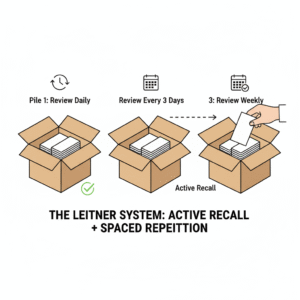
Common Mistakes That Make These Methods Fail
I’ve made all of these. Be honest with yourself—are you doing them?
- “I’ll just re-read the flashcard.” This is the #1 mistake. It’s fake active recall. You must try to answer from memory first, then check.
- “I’ll make the flashcards later.” If you wait a week to make your flashcards, you’ve already forgotten 80% of the lecture. Make them the same day you learn the topic.
- “This is too hard.” Yes, it is! Active recall feels harder than re-reading. That’s how you know it’s working. Learning isn’t supposed to feel easy.
- Cramming. Spaced repetition is the opposite of cramming. It takes planning. You can’t start it two days before WAEC and expect miracles.
Frequently Asked Questions (FAQs)
Can I use active recall without spaced repetition?
Yes, and it’s still very effective! Doing a “brain dump” (writing down everything you know about a topic) the day before an exam is a great form of active recall. But, it’s most powerful when combined with spacing.
What’s better for JAMB, active recall or spaced repetition?
You need both! Use active recall (like doing tons of past questions) and spaced repetition (reviewing the topics you get wrong at increasing intervals).
How long should the “spaces” be?
Don’t overthink it. A simple schedule like “1 day, 3 days, 1 week, 2 weeks” works great. If you use an app like Anki, it does all the scheduling for you.
Does this take a lot of time?
It takes more effort up front (making the flashcards), but it saves you hundreds of hours of useless re-reading later. 10 minutes of real active recall is worth more than an hour of passive highlighting.
What are the best tools for this?
- Digital: Anki (the most powerful, but a bit of a learning curve) or Quizlet.
- Analog: Paper flashcards and a few envelopes or small boxes (the “Leitner System”).
My Final Thoughts
For years, I thought I was “bad at memory.” The truth is, I was just using bad techniques.
The difference between spaced repetition and active recall is simple: one is the method (testing) and one is the schedule (timing).
Stop just re-reading. Start testing yourself. Start spacing out your revision. It’s more effort, but it’s the only way to stop that horrible “in one ear and out the other” feeling and finally start remembering what you study.
What do you think? Have you tried these? Let me know your own study tips in the comments below!

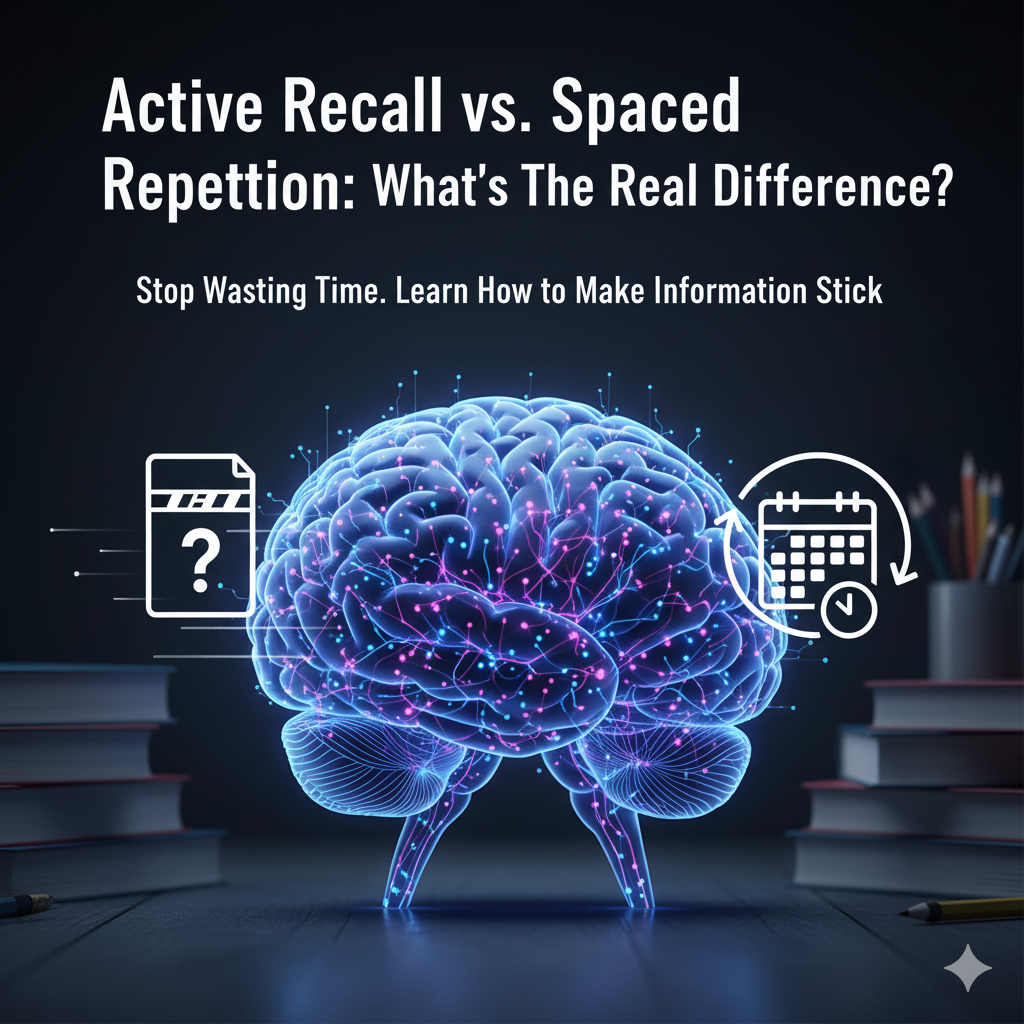

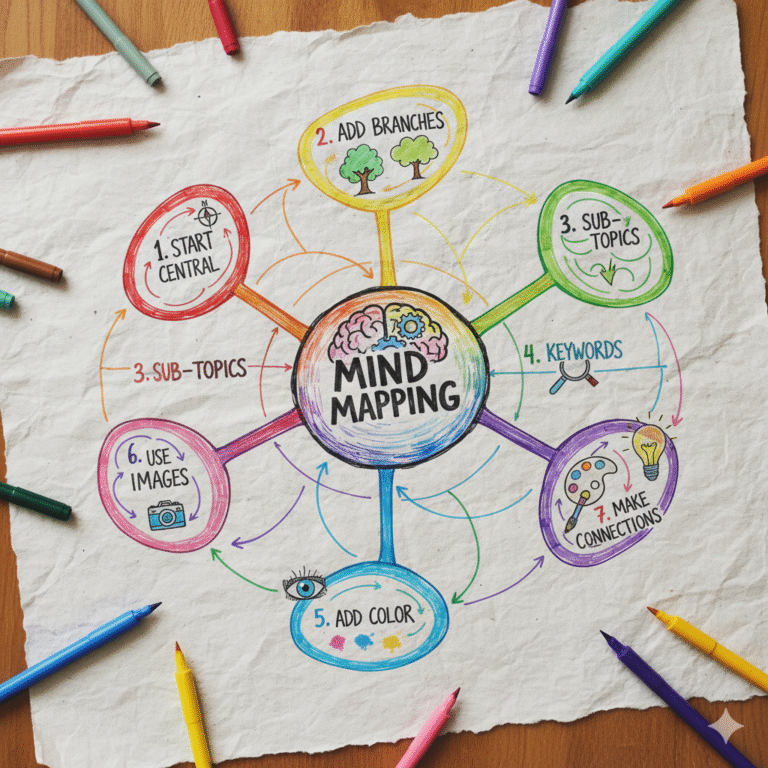




2 Comments